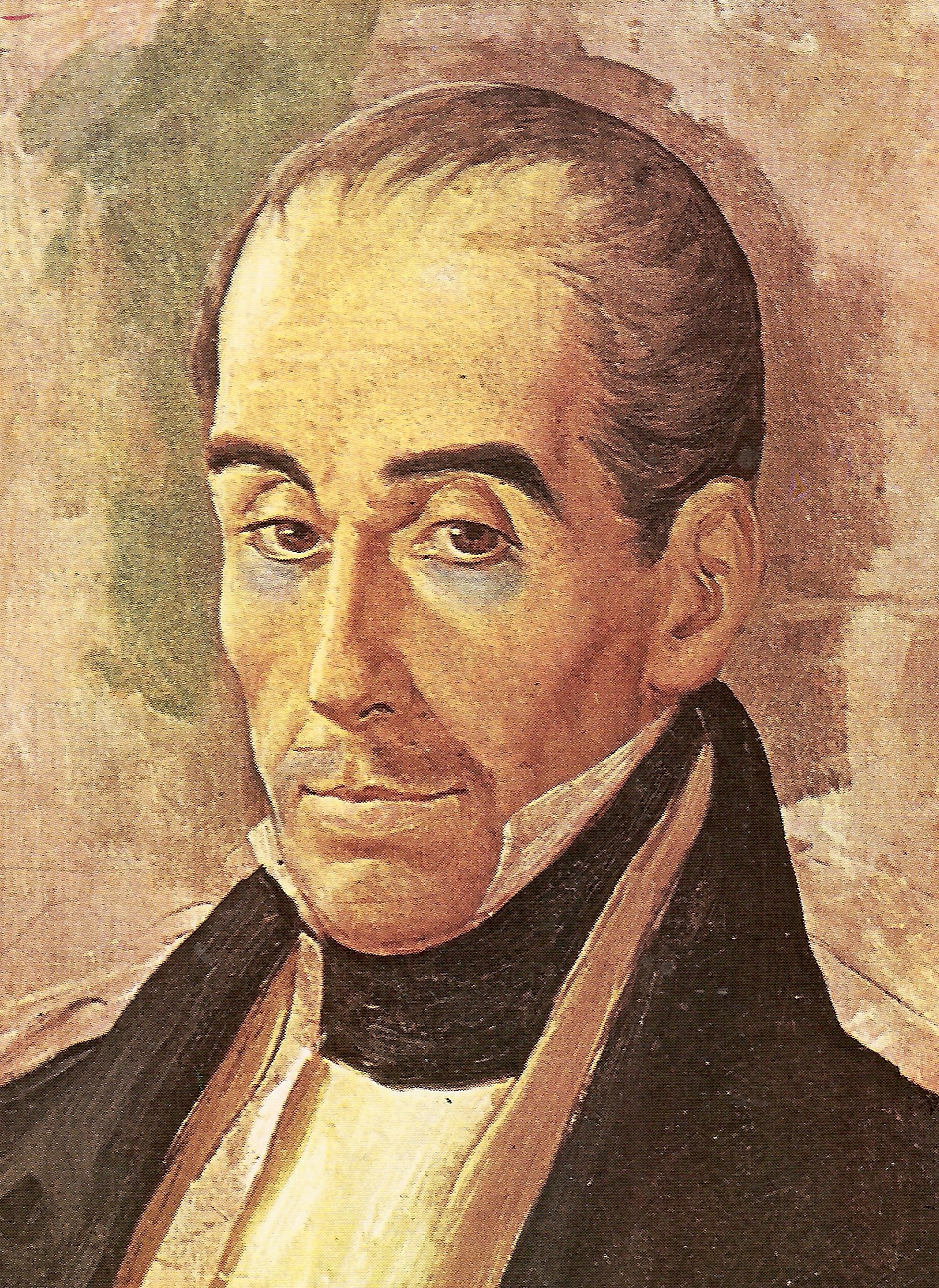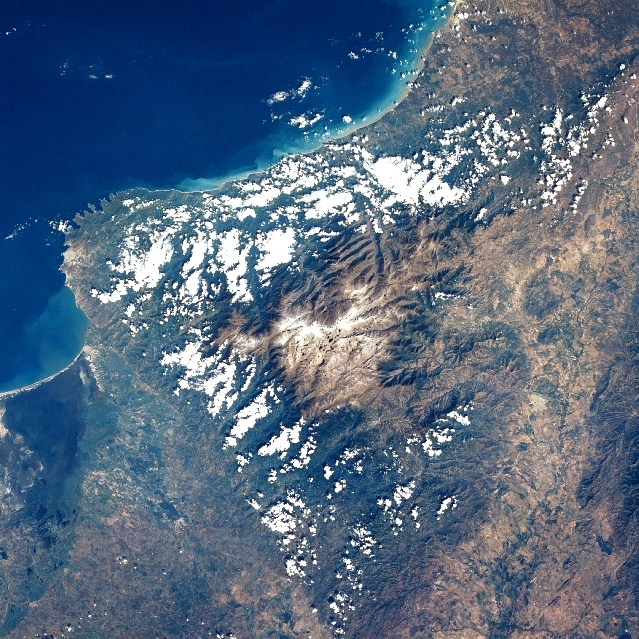|
Bolivarian Museum
The Bolivarian Museum (Spanish: ''Museo Bolivariano'') is dedicated to Simón Bolívar, the hero of Latin American independence. It is situated in Caracas, Venezuela. The museum is run in tandem with the birthplace of Simón Bolívar next door. The collections include items related to Bolivar and Venezuelan independence. History of the Museum Many of the items in the museum were collected in the nineteenth century, and some of them were put on display in 1883 when President Guzmán Blanco organised an exhibition to celebrate the centenary of Bolívar's birth. In the twentieth century they were housed in a museum. President Rómulo Betancourt took the decision to move the museum to its present site near the Plaza El Venezolano. The design of the single-storey structure was commissioned from the architect, Graziano Gasparini, who was already known for restoration work on Venezuela's Spanish Colonial church buildings. For the museum building he reconstructed a Spanish Colonial fac ... [...More Info...] [...Related Items...] OR: [Wikipedia] [Google] [Baidu] |
Spanish Language
Spanish ( or , Castilian) is a Romance languages, Romance language of the Indo-European language family that evolved from colloquial Latin spoken on the Iberian peninsula. Today, it is a world language, global language with more than 500 million native speakers, mainly in the Americas and Spain. Spanish is the official language of List of countries where Spanish is an official language, 20 countries. It is the world's list of languages by number of native speakers, second-most spoken native language after Mandarin Chinese; the world's list of languages by total number of speakers, fourth-most spoken language overall after English language, English, Mandarin Chinese, and Hindustani language, Hindustani (Hindi-Urdu); and the world's most widely spoken Romance languages, Romance language. The largest population of native speakers is in Mexico. Spanish is part of the Iberian Romance languages, Ibero-Romance group of languages, which evolved from several dialects of Vulgar Latin in I ... [...More Info...] [...Related Items...] OR: [Wikipedia] [Google] [Baidu] |
Simón Bolívar
Simón José Antonio de la Santísima Trinidad Bolívar y Palacios (24 July 1783 – 17 December 1830) was a Venezuelan military and political leader who led what are currently the countries of Colombia, Venezuela, Ecuador, Peru, Panama and Bolivia to independence from the Spanish Empire. He is known colloquially as '' El Libertador'', or the ''Liberator of America''. Simón Bolívar was born in Caracas in the Captaincy General of Venezuela into a wealthy criollo family. Before he turned ten, he lost both parents and lived in several households. Bolívar was educated abroad and lived in Spain, as was common for men of upper-class families in his day. While living in Madrid from 1800 to 1802, he was introduced to Enlightenment philosophy and met his future wife María Teresa Rodríguez del Toro y Alaysa. After returning to Venezuela, in 1803 del Toro contracted yellow fever and died. From 1803 to 1805, Bolívar embarked on a grand tour that ended in Rome, where he swore to end ... [...More Info...] [...Related Items...] OR: [Wikipedia] [Google] [Baidu] |
Caracas
Caracas (, ), officially Santiago de León de Caracas, abbreviated as CCS, is the capital and largest city of Venezuela, and the center of the Metropolitan Region of Caracas (or Greater Caracas). Caracas is located along the Guaire River in the northern part of the country, within the Caracas Valley of the Venezuelan coastal mountain range (Cordillera de la Costa). The valley is close to the Caribbean Sea, separated from the coast by a steep 2,200-meter-high (7,200 ft) mountain range, Cerro El Ávila; to the south there are more hills and mountains. The Metropolitan Region of Caracas has an estimated population of almost 5 million inhabitants. The center of the city is still ''Catedral'', located near Bolívar Square, though some consider the center to be Plaza Venezuela, located in the Los Caobos area. Businesses in the city include service companies, banks, and malls. Caracas has a largely service-based economy, apart from some industrial activity in its metropolitan ar ... [...More Info...] [...Related Items...] OR: [Wikipedia] [Google] [Baidu] |
Correo Del Orinoco (2009)
''Correo del Orinoco '' (the ''Orinoco Post'') is a Venezuelan newspaper launched in 2009 with government backing. (Carroll's article can also be accessed aChavez in driver's seat as he silences his critics The New Zealand Herald. 10 March 2010. Retrieved 28 July 2015.) It is named for its nineteenth-century predecessor, which under the patronage of Simón Bolívar promoted Venezuelan independence. It uses the slogan "the artillery of thought". The original ''Correo del Orinoco'' was published on the Orinoco river, but the modern newspaper is based in Caracas. The newspaper is affiliated to the Ministry of Popular Power for Communication and Information and the United Socialist Party of Venezuela. In 2010 the ''Correo del Orinoco'' launched a weekly English-language edition, ''Correo del Orinoco International'', with Eva Golinger as its editor. On 12 January 2016, Desirée Santos Amaral, a former Minister of Communication and Information, became the new editor of Correo del ... [...More Info...] [...Related Items...] OR: [Wikipedia] [Google] [Baidu] |
Birthplace Of Simón Bolívar
The Birthplace of Simón Bolívar ( es, Casa Natal del Libertador Simón Bolívar) is a seventeenth-century house in the Venezuelan capital city Caracas where the hero of Venezuelan and Latin American independence, Simón Bolívar, was born. Now a significant tourist attraction, the building is located in a little street off the Plaza San Jacinto, a block east of the Plaza Bolívar (Caracas), Plaza Bolívar. It is one of only a few houses from the colonial era which survive in central Caracas. One of the adjacent buildings serves as a Bolivarian Museum, Bolivarian museum (''museo bolivariano''). The birthplace and museum together present memorabilia connected with Bolivar and the Venezuelan War of Independence, along with weapons and furniture of that period. History The house on San Jacinto Street was completed in the 1640s. Bolivar was born to Doña María de la Concepción Palacios y Blanco and Coronel Don Juan Vicente Bolívar y Ponte in the bedroom here on 24 July 1783, a ... [...More Info...] [...Related Items...] OR: [Wikipedia] [Google] [Baidu] |
Antonio Guzmán Blanco
Antonio José Ramón de La Trinidad y María Guzmán Blanco (28 February 1829 – 28 July 1899) was a Venezuelan military leader, statesman, diplomat and politician. He was the president of Venezuela for three separate terms, from 1870 until 1877, from 1879 until 1884, and from 1886 until 1887 and General during the Venezuelan Federal War. He was a member of the movement known as ''Liberalismo Amarillo''. Early life and education Guzmán was born in Caracas as the son of Antonio Leocadio Guzmán, a Venezuelan journalist, politician as well as founder of the Liberal Party and Carlota Blanco Jerez de Aristeguieta. Career Military career and ambassador He was banished by the administration of General Julián Castro, and accompanied General Juan Crisóstomo Falcón in his invasion of Venezuela, becoming his general secretary. After the final defeat of Falcón at the Battle of Coplé in September, 1860, Guzmán accompanied his chief in his flight, and was sent to the West Indi ... [...More Info...] [...Related Items...] OR: [Wikipedia] [Google] [Baidu] |
Rómulo Betancourt
Rómulo Ernesto Betancourt Bello (22 February 1908 – 28 September 1981; ), known as "The Father of Venezuelan Democracy", was the president of Venezuela, serving from 1945 to 1948 and again from 1959 to 1964, as well as leader of Acción Democrática, Venezuela's dominant political party in the 20th century. Betancourt, one of Venezuela's most important political figures, led a tumultuous career in Latin American politics. Periods of exile brought Betancourt in contact with various Latin American countries as well as the United States, securing his legacy as one of the most prominent international leaders to emerge from 20th-century Latin America. Scholars credit Betancourt as the Founding Father of modern democratic Venezuela. Early years Betancourt was born in Guatire, a town near Caracas. His parents were Luis Betancourt Bello (of Canary origins) and Virginia Bello Milano. He attended a private school in Guatire, followed by high school at the ''Liceo Caracas'' in Ca ... [...More Info...] [...Related Items...] OR: [Wikipedia] [Google] [Baidu] |
Graziano Gasparini
Graziano Gasparini (31 July 1924 – 30 November 2019) was a Venezuelan architect, photographer, painter and historian, sometimes referred to as Graciano Gasparini (ie using a Spanish version of his first name). Gasparini was born in Gorizia, on the Italian–Slovenian border, in 1924. After completing his education in Venice, he worked for Carlo Scarpa in connection with the Biennale. After a break caused by the Second World War, the famous exhibition resumed in 1948, and Gasparini first visited Venezuela that year while promoting it. He settled in Caracas and pursued a career as an architect. He specialised in restoring Spanish Colonial architecture, while developing a parallel career as an architectural historian. The buildings he worked on include the Bolivarian Museum in Caracas, which was inaugurated in 1960. Beginning with a survey of Spanish Colonial churches in Venezuela (''Templos coloniales de Venezuela''. Caracas, 1959), he published on a variety of topics related t ... [...More Info...] [...Related Items...] OR: [Wikipedia] [Google] [Baidu] |
Santa Marta
Santa Marta (), officially Distrito Turístico, Cultural e Histórico de Santa Marta ("Touristic, Cultural and Historic District of Santa Marta"), is a city on the coast of the Caribbean Sea in northern Colombia. It is the capital of Magdalena Department and the fourth-largest urban city of the Caribbean Region of Colombia, after Barranquilla, Cartagena, and Soledad. Founded on July 29, 1525, by the Spanish conqueror Rodrigo de Bastidas, it was the first Spanish settlement in Colombia, its oldest surviving city, and second oldest in South America. This city is situated on a bay by the same name and as such, it is a prime tourist destination in the Caribbean region. History Pre-Colombian times Before the arrival of Europeans, the South American continent was inhabited by a number of indigenous groups. Due to a combination of tropical weather, significant rainfall, and the destruction and misrepresentation of many records by Spanish conquistadors, our understanding of the ... [...More Info...] [...Related Items...] OR: [Wikipedia] [Google] [Baidu] |
Ziortza-Bolibar
Ziortza-Bolibar ( es, Cenarruza-Puebla de Bolívar) is a municipality in the province of Biscay, Basque Country (Spain), in the comarca of Lea-Artibai. It has 383 inhabitants according to the 2006 census, and has an area of 18.94 km². The municipality was annexed in 1969 by Markina-Xemein and recovered its independence on January 1, 2005. Records indicate its existence since the 11th century. Etymology The name ''Bolibar'' comes from the Basque language, meaning "windmill valley" (''bolu'' = "windmill" and ''ibar'' = "valley"). Ziortza/Cenarruza is derived from a local name for polygonum ''ziaurri'' (historically *''zinaurri'') and the suffix -tza denoting a place of abundance of something. Puebla de Bolívar Bolívar or Bolibar (in Basque) is the urban centre of the municipality, situated along the stream with the same name, at the foot of Mount Oiz. From 1969 to 2004 it belonged, along with the neighbourhood of Cenarruza (Ziortza in Basque), to the municipality of Ma ... [...More Info...] [...Related Items...] OR: [Wikipedia] [Google] [Baidu] |






